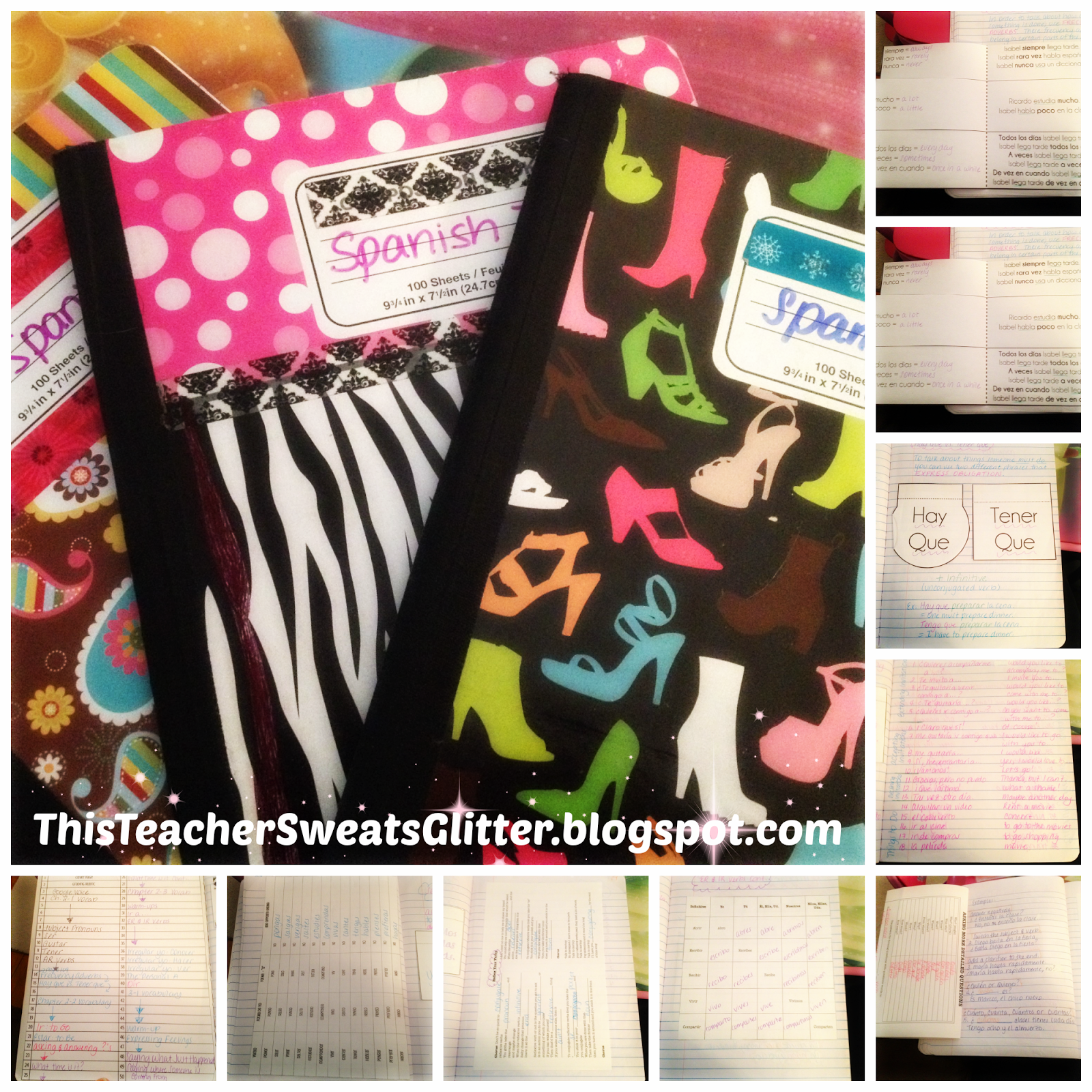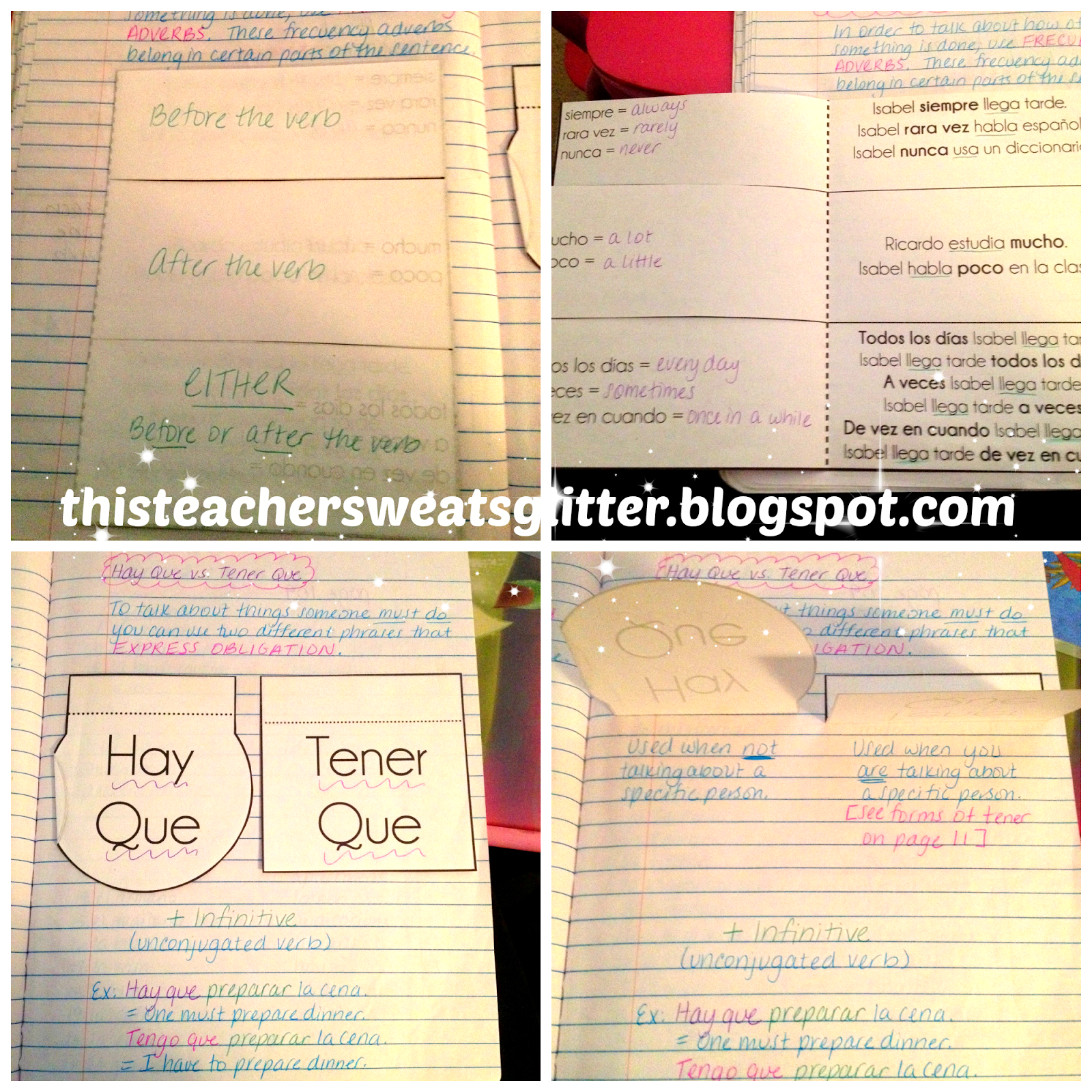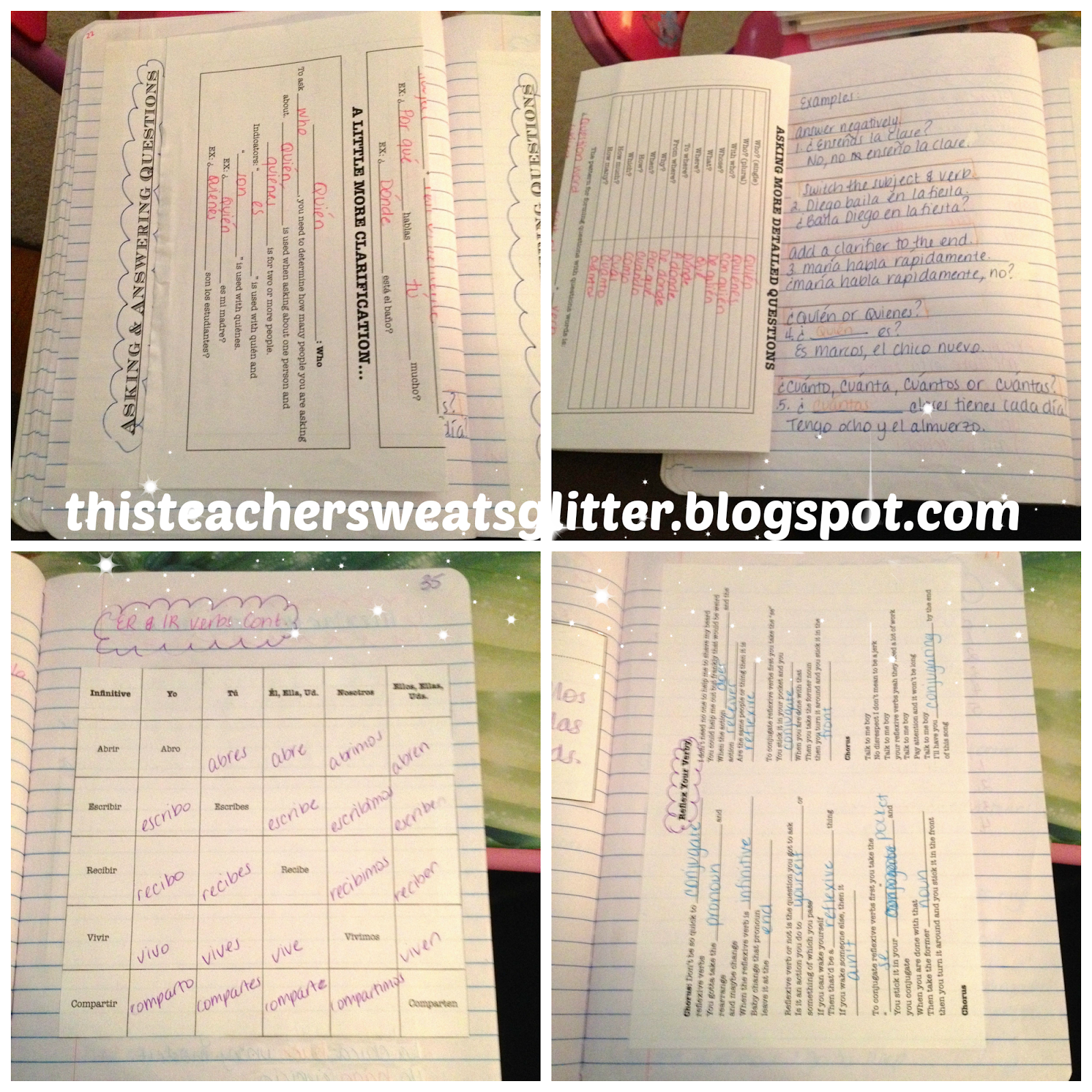So, it's about time I did a follow up post to my Interactive Notebook post
here and
here. I know, I'm a slacker.
I think it's very important to start off by saying I DO NOT follow the traditional method of using Interactive Notebooks. I see nothing wrong with the methodology of the left and right pages, I just don't do it. I teach high school and a lot of the posts and pins I've seen about Interactive Notebooks are for elementary or middle school students. There are very few Spanish teachers I've come across that use Interactive Notebooks, though I have found a few. What I have found are tons of great ideas on Pinterest that have led me to some real gems that I'm happy to share with you on my
Interactive Notebook Pinterest board. I am incorporating a lot of
Sarah's ideas this year for setting up the notebooks.

Back to mine. I think it's important to emphasize I do treat these Interactive Notebooks a lot less like Interactive Notebooks than elementary teachers do. Mine do consist of notes (and lots of them), vocabulary lists, etc. But, I do use foldables, color coding and a huge reliance on organization (numbering, titling, table of contents, etc.). Since I rarely use my textbook, this is the next best thing my students have to study from, so it needs to be the same for everyone. I am not going to say I don't get questioned every day about the correct page to be on, what if my notes aren't as long as yours or mine are too long, etc. It's really hard to keep them all where they're supposed to be, but I make all attempts necessary to do so because it's that important to me. What I have found helps them to stay with me is giving them the number of pages they will be working with on a given day. For example, if we're covering vocabulary, they know what page we'll be starting on, but I also tell them what page we'll be ending on. I do the same with Grammar notes or practice activities we do. If they write smaller than me (which most do), they usually don't take up as many pages as I do and that's fine. I tell them to intentionally leave the pages blank. If they write larger than me, they have to try to cram it all onto the proper pages. Again, I write pretty large so this generally is not a problem for me.
Now, let's talk about the ways I use the notebooks. As I've said, I put everything in them in terms of vocabulary and grammar notes. On rare occasions I will have my students complete a homework assignment or in class assignment in them, but for the most part they're really used as a resource rather than for practice (hence the fact that I do not do the left/right notebook method). Here you can see some pictures of what I mean...

Sometimes I run out of space or have a grammar concept that I know is going to be A LOT of notes (Asking and Answering Questions is a HUGE topic for example). When that happens, I tend to give the students more of a fill-in-the-blank type notes page and then just have them write examples on the notebook pages and just fill in key components on the worksheet notes. The worksheet is then taped into the notebook and folded in half so they can close up the notebook and not lose the sheet. Sometimes I have the students fill in charts that are just taped into the books and other times we complete cloze type activities with songs that help reinforce the information we've covered that day (this page is showing Reflex Your Verby - if you haven't checked this one out, you HAVE to!)

Though I really don't use textbooks, I am still tied to the vocabulary and grammar structures covered within the book, so my vocabulary lists are incredibly long. The way I tackle them is to break them into sections and give each section a title (it may be the same as what the book uses or it may be something more updated). I have the students write the section title in the margin and then the words for that section go next to the title. Once we've reached the end of the section, they draw a line. It's simple but helps keep them organized. We keep the Spanish words/phrases on the left and the English on the right.
I found it easiest to print out the table of contents over four pages and then have them glue/tape the pages onto the inside cover of the notebook. I wish I could say all of my students kept up with the table of contents, but some didn't (and their grades reflected that). But, those that did were able to easily follow and utilize their notebooks.
I hope this helps you to figure out how to make Interactive Notebooks work for you. The key thing is to realize that what someone else does may or may not work for you. It's taken me 14 years of teaching to realize it, but things that work in other classes just may not work in mine, no matter how hard I try or how much better for my students it may be. You ultimately have to do what will enable your students to learn. Maintaining our Interactive Notebooks this way has worked for me and my students so far. That could all change in September, but I'm still going to give it my all because I haven't felt the sense of achievement that I felt with my kids last year in a long time.
Comment and tell me what you do with Interactive Notebooks and how you do it. If you don't use them yet, can I answer any questions for you?










